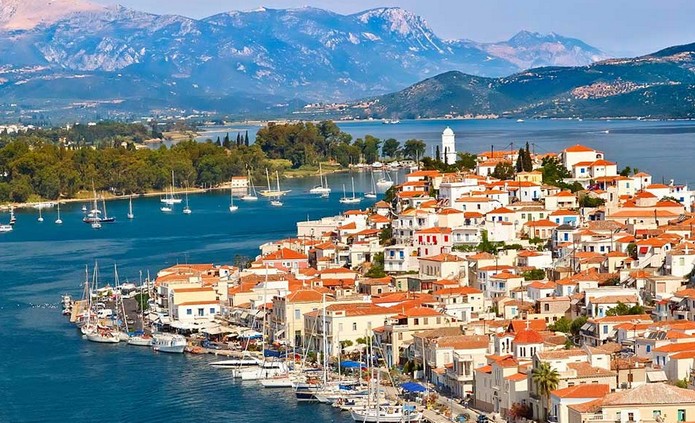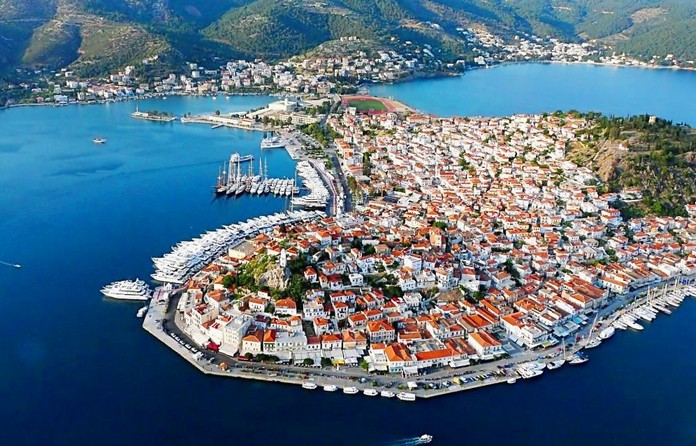Poros means “crossing” and it’s from this that the whole island takes its name. It lies in the south-west of the Saronic Gulf, opposite the Argolid in the Peloponnese. On the edge of this crossing , built in amphitheatre form, on the slopes of the hill, is the cheerful island town which is the port of Poros and the island’s most important settlement.
Opposite, 10 minutes away by boat, are the green shores of Peloponnese with the famous lemon forest from which in May, the scent of the lemon blossom wafts across Poros.Poros is a green island with an area of 33 sq km and a shoreline of 42km. It’s permanent population numbers 3500.

There is a daily service provided by both ferries and hydrofoils from Piraeus which is 31 nautical miles away.Aegina, Methana, Hydra, Spetses and Ermioni can be reached by the same means while the “flying dolphins” also go to Porto Heli, Leonidi, Kyparissi, Monemvasia and Kythira and in summer to Tolo and Nafplio Galatas.
History
Poros, called Calaureia in ancient times, was the island of Poseidon, god of the sea. This is obvious from different literary references and from the traces of the temple of Poseidon which are to be found in the middle of the island. This fact may account for why Poros was chosen to be the headquarters of an alliance set up in the 7th century BC whose members were seven cities including Athens and Aegina.
Subsequently, the fortunes of Poros followed those of the other islands of the Saronic gulf. In the War of Independence against the Turks in 1821, Poros fought alongside the other islands. In 1830 it became a naval base.

Getting to know the island
In the port of Poros it’s worth visiting the Archaeological museum and taking a walk as far as the clock tower, the town’s highest point and the island’s “trademark”.A road that heads north-west brings us to what is perhaps the island’s finest beach, Neorio. It has dense pine trees and is a popular location in summer.
The road which goes east from the port brings us to Askeli, a village also with pine trees on the crystal clear water edge. High on a hill with a magnificent view towards the lemon forest is the Nunnery of Zoodochos Pighi. The traces of the temple of Poseidon lie in the center of the island on a hill with a panoramic view over Poros.
It would be a loss to visit Poros without going to the lemon forest which stands opposite on the coast of Peloponnese. The boat takes about 10 minutes.
Water flows to left and right and branches of the lemon trees above shade you from the sun. Visitors who are lucky to be there in May will undoubtedly find the scent of the small white lemon blossoms positively intoxicating.